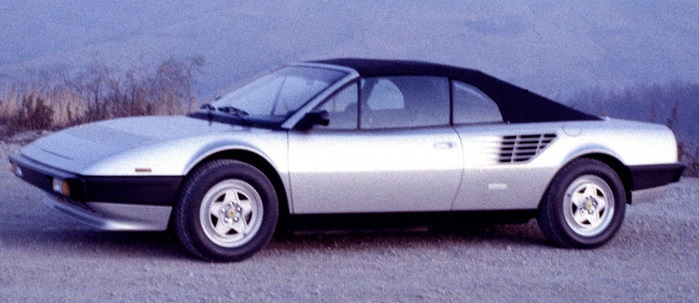

Convertible, 2 Doors, 4 Seats
11.9 l/100 km 19.77 US mpg
21.4 l/100 km 10.99 US mpg
9.5 l/100 km 24.76 US mpg
300 Hp @ 7200 rpm.
88.1 Hp/l
265 km/h 164.66 mph
3405 cm3
207.79 cu. in.
8, V-engine
Rear wheel drive,
4535 mm
178.54 in.
1810 mm
71.26 in.
1545 kg
3406.14 lbs.
| Brand | Ferrari |
|---|---|
| Model | Mondial (Convertible) |
| Version | Mondial Cabrio |
| Engine version | 3.4 i V8 32V (300 Hp) |
| Year production start | 1989 |
| Year production end | 1993 |
| Vehicle type | Convertible |
| Horsepower RPM | 300 Hp @ 7200 rpm. |
| Acceleration 0 - 100 kmh sec | 6.3 sec |
| Curb weight kg -lbs total |
1545 kg3406.14 lbs. |
| Overall length mm - inch |
4535 mm178.54 in. |
| Doors | 2 |
| Top Speed | 265 km/h 164.66 mph |
| Cam configuration | DOHC |
|---|---|
| Engine position and orientation | Middle, Transverse |
| Cylinders | 8 |
| Position of cylinders | V-engine |
| Displacement (liters) |
3405 cm3207.79 cu. in. |
| Eng. horsepower RPM | 300 Hp @ 7200 rpm. |
| Horsepower per litre | 88.1 Hp/l |
| Weight / horsepower kg/hp - hp/tons |
5.2 kg/Hp194.2 Hp/tonne |
| Weight / torque kg/Nm - Nm/tons | 4.8 kg/Nm, 209.1 Nm/tonne
4.8 kg/Nm209.1 Nm/tonne |
| Torque Nm RPM lb-ft RPM |
323 Nm @ 4200 rpm.238.23 lb.-ft. @ 4200 rpm. |
| Bore (mm in) |
85 mm3.35 in. |
| Stroke (mm in) |
75 mm2.95 in. |
| Compression ratio | 10.4 |
| Fuel delivery system | Multi-point indirect injection |
| Fuel type | Petrol (Gasoline) |
| Valvetrain | 4 |
| Engine aspiration | Naturally aspirated engine |
| Powertrain architecture | Internal Combustion engine |
| Engine location | Middle, Transverse |
| Drive configuration | Rear wheel drive |
|---|---|
| Transmission | 5 |
| Front brakes | Ventilated discs |
|---|---|
| Rear brakes | Ventilated discs |
| Anti-lock brake system | ABS (Anti-lock braking system) |
| Front suspension | Coil spring |
|---|---|
| Rear suspension | Helical spring |
| Wheels size | 225/55 R16 |
|---|
| Passengers seats | 4 |
|---|---|
| Trunk space min liter | cu. Ft. |
300 l10.59 cu. ft. |
| Overall length mm - inch |
4535 mm178.54 in. |
|---|---|
| Overall width mm -inch |
1810 mm71.26 in. |
| Overall height mm -inch |
1235 mm48.62 in. |
| Wheelbase mm - inch |
2650 mm104.33 in. |
| Track width front mm - inch |
1520 mm59.84 in. |
| Track width rear mm - inch |
1560 mm61.42 in. |
| Curb weight kg -lbs total |
1545 kg3406.14 lbs. |
|---|---|
| Gross weight kg -lbs total |
1825 kg4023.44 lbs. |
| Capacities kg - lbs |
280 kg617.29 lbs. |
| Fuel tank liters | gallons |
86 l22.72 US gal | 18.92 UK gal |
| City l/100km - mpg |
21.4 l/100 km10.99 US mpg |
|---|---|
| Highway l/100 km - mpg |
9.5 l/100 km24.76 US mpg |
| Combined l/100 km - Mpg |
11.9 l/100 km19.77 US mpg |
| Autonomy km (combined use) | 782 |
8 CYLINDER V-Engine
https://www.thecarspec.net/components/engine/8-cylinders-v